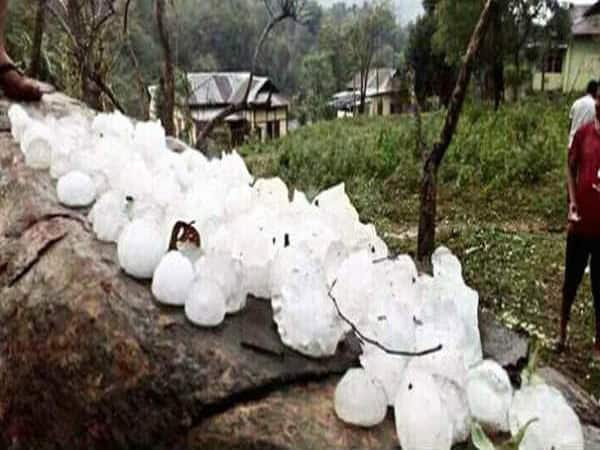Itanagar (Arunachal Pradesh): Hailstones weighing up to three kilograms were recently discovered in Odisha’s Mayurbhanj and Balasore districts.
Several septuagenarian residents of Bhimdaa village, which is located along the banks of the Gangahara River in Mayurbhanj district, told this correspondent that in their memory they had not seen storms of this kind.
They said they the heavy hailstones making holes in asbestos and CGI sheeted roofs, and causing damage to property in several villages. Badasahi block and Remuna experienced the brunt of nature’s fury.
The possible impact of climate change was also seen in Arunachal Pradesh. This north eastern state is experiencing a severe cold wave since the start of the year. For example, the village of Chambang, criss-crossed by the Rivers Chatey, Peri, Patee and Kurung, has been experiencing heavy snowfall since January 4. Mechuka and Damin also experienced heavy snowfall this year.
Earth scientist Professor Trilochan Singh said, “Climate change is the buzz word today. Though the weather continues to change every moment, changes in the climate take place over a long period of time.”
He added, “The earth existed 4.5 billion years ago, though human life came into existence only about 10,000 years ago. Climate change is a circle known as the Glacier Phase and the Inter-Glacier Phase. Glaciers are formed in the first phase and melt in second phase due to various factors. This melting has not been uniform,” he discloses.
Scientists have found that the present inter-glacier phase begun 11,000 years ago and will continue till 18,000 years.
However, because human activity has a direct bearing on the climate, the period may extend to 20,000 years, they added.
Professor Singh was a member of the Gondwanaland Expedition, an international expedition from Shimla to Cape Agulhas in South Africa to trace the great Gondwanaland that existed as a single landmass about 250 million years ago and drifted to its present position in different continents.
‘Lucy’ fossils in Addis Ababa’s National Museum provide a link between man and the ape, he informed. (ANI)

